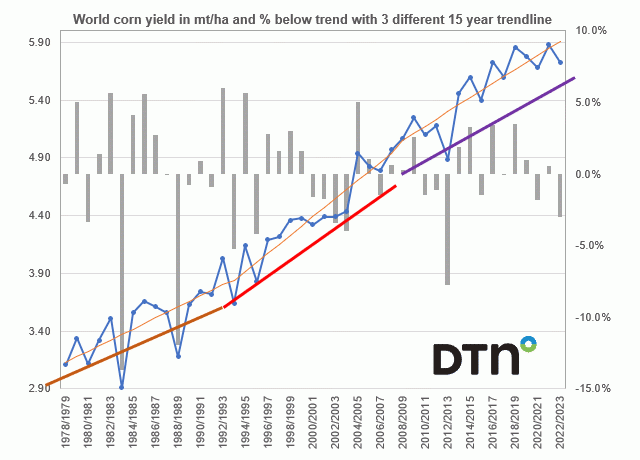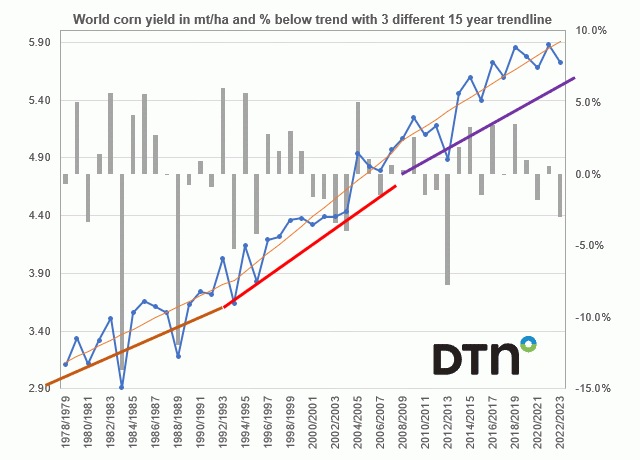Fundamentally Speaking
World Corn Yield 2nd Largest Percent Drop From Trend in 20 Years
Another year of less-than-optimal growing conditions has again resulted in the U.S. not seeing trend or higher corn and bean yields for a while even with enhanced genetics as weather continues to remain unfavorable here and also in many parts of the world.
This is obviously not a favorable situation when global demand for various grain, oilseed and derived byproducts continues to increase, and an ever-larger share of total output is being diverted to energy as opposed to food purposes.
We will be looking at trends in global yields of key crops over time and will start by looking at the world corn yields in metric tons per hectare (mt/ha).
P[L1] D[0x0] M[300x250] OOP[F] ADUNIT[] T[]
Plotted on the left-hand axis are the actual yields in mt/ha from 1978-2022 and three separate trend lines with 1978-1992 in orange, 1993-2007 in red and 2008-2044 in purple.
The percent that the actual yield deviates from their respective 15-year trend line is reported on the right-hand axis.
A couple of observations: this year's past global yield in the 2022/23 season was 5.73 mt/ha, the second lowest since 2017 and 3.0% below the latest 15-year trend, the second largest negative deviation from the world corn trend yield in 20 seasons, and we suspect below average crops in the U.S., Argentina, and the European Union largely responsible for this.
Second is the fact that the upward trend in global corn yields appears to have slowed in the most recent 15-year period.
From 1978 to 1992, global corn yields increased by an average of 0.48 metric tons per hectare and that increased in the next 15-year period to 0.78 mt/ha.
However, in the latest 15-year period going through this past year, the increase in world corn yields had slowed to an average of 0.61 mt/ha, down 22.4% from the prior period which is likely one of the reasons why corn prices both here and abroad continue to hover well above their historical averages.
(c) Copyright 2023 DTN, LLC. All rights reserved.






Comments
To comment, please Log In or Join our Community .